In the country of elongated shape, the weather varies in each region. Temperature fluctuations, monsoon changes, and sharp contrasts between the north, center, and south create unique conditions in each month. The best time to vacation in Vietnam varies depending on the direction and purpose of the trip. The same month can offer sunshine in Nha Trang, prolonged downpours in Da Nang, and coolness in Hanoi.
When planning a vacation, it is important to consider not only the weather by month but also the amount of rainfall, humidity, water temperature, and the number of rainy days in different parts of the country. Ignoring seasonal features can result in a ruined beach vacation, spoiled landscapes, and complex logistics between regions.
When to vacation in southern Vietnam: stable summer
Southern Vietnam offers comfortable conditions almost year-round. Ho Chi Minh City, Phu Quoc, Phan Thiet, and Mui Ne fall into a tropical climate zone with moderate humidity and mild temperature variations. The best time to vacation in Vietnam here is in summer rather than winter months: from December to April. During this period, the sun is stable, rainfall is minimal, and the temperature ranges from +28…+32 °C.
The beach season opens here during the Christmas and New Year holidays: calm sea, clean air, greenery, and predictable climate create ideal conditions for relaxation. In May, the rainy season begins, lasting until October. Precipitation falls in the form of short tropical showers in the evening or at night, allowing for swimming and strolling during the day.
Central Vietnam: instability with a short window for vacation
A region with a changeable climate. Da Nang, Hoi An, and Hue often fall under the influence of typhoons in September and October. Nevertheless, the best time to vacation in Vietnam in the central part is from February to May. During this time, there is minimal risk of rain, moderate humidity, and air temperatures within +26…+30 °C.
The climate in the center is characterized by more abrupt transitions between seasons. June brings heat, humidity sharply increases, and in August-September, typhoons often hit the coast. From November to January, overcast weather is common, with an increased number of rainy days and a significant drop in temperature to +18…+20 °C.
Northern Vietnam: seasonal changes like in Europe
The north is characterized by distinct seasonal divisions. Hanoi and Haiphong experience a cool winter (December — February) with temperatures ranging from +14 °C at night to +22 °C during the day. This period, when it’s best to travel to Vietnam for walks, excursions, and comfortable movement — without heat but also without beach relaxation.
The summer months (June — August) are hot and humid: up to +35 °C during the day, high humidity, and thunderstorms in the second half of the day. The best time for beach vacations is May and September when rains are not too frequent yet the heat is not extreme. The mountains of northern Vietnam (Sapa, Ha Giang) are best visited in spring (March — May) or autumn (September — November) when the temperature is stable, and the rice terraces are colored in green or golden hues.
Nha Trang Coast: stable resort rhythm
Nha Trang is one of the few Vietnamese resorts where the beach season lasts more than eight months a year. The best time to vacation in Vietnam here is from January to August. The water temperature reaches +28 °C, and the air temperature ranges from +30…+32 °C. The amount of rainfall is minimal from February to June, not exceeding 50 mm per month. September brings prolonged rains that last until November. October is considered the rainiest month — with up to 300 mm of precipitation and over 15 rainy days. During this period, tourist activity decreases, although hotel prices drop by 1.5–2 times.
When to vacation in Vietnam on Phu Quoc: year-round tropical recharge
The island of Phu Quoc offers a comfortable climate from November to May. During these months, the best time for beach vacations combines with clear sea, calmness, and water temperature of +29 °C. The resort actively welcomes tourists during the New Year holidays and in March-April offers peak solar activity with moderate air temperatures of +30…+31 °C.
The summer months (June — October) are characterized by increased cloudiness, squalls, and regular rainfall. The number of rainy days in August reaches 20, with rainfall levels exceeding 400 mm. However, the downpours are intermittent, leaving opportunities for morning swims and evening relaxation.
When is the best time to travel to Vietnam: month-by-month comparison
Trip planning requires a breakdown by time and regions. Weather conditions by month determine the richness of the vacation, beach comfort, and the risk of sudden downpours. Below is an expanded table with regional features:
| Month | South (Phu Quoc, Ho Chi Minh City) | Central (Da Nang, Hoi An) | North (Hanoi, Haiphong) |
|---|---|---|---|
| January | +28 °C, dry, 3 rainy days | +22 °C, cloudy | +17 °C, cool |
| February | +30 °C, clear, minimal rainfall | +24 °C, sunny | +19 °C, dry |
| March | +31 °C, stable heat | +27 °C, calm | +23 °C, warm |
| April | +33 °C, moderate rains | +30 °C, sunny | +27 °C, humid |
| May | +34 °C, first showers | +32 °C, high humidity | +30 °C, muggy |
| June | +32 °C, brief showers | +34 °C, thunderstorms | +33 °C, downpours |
| July | +31 °C, variable cloudiness | +33 °C, hot | +34 °C, storms |
| August | +30 °C, up to 16 rainy days | +32 °C, typhoons | +33 °C, thunderstorms |
| September | +29 °C, reduced rainfall | +30 °C, unstable | +30 °C, cooler |
| October | +28 °C, 5–6 rainy days | +28 °C, typhoon risk | +26 °C, dry |
| November | +27 °C, dry season | +25 °C, pleasant weather | +22 °C, fog |
| December | +27 °C, start of high season | +23 °C, cloudy | +18 °C, winter |
When is the best time to vacation in Vietnam: key points
The ideal season depends on the region and the purpose of the trip. The best time to vacation in Vietnam for beach relaxation is from December to April in the south, from February to May in the center, and in May or September in the north. For excursions and nature routes, it is more convenient to choose the shoulder seasons — March or November. Warm sea, bright sun, and the absence of tropical storms make winter and spring optimal months for a comfortable vacation. Comparing temperatures, rainfall amounts, and resort geography helps plan a trip without surprises, taking into account preferences for activities, budget, and weather.

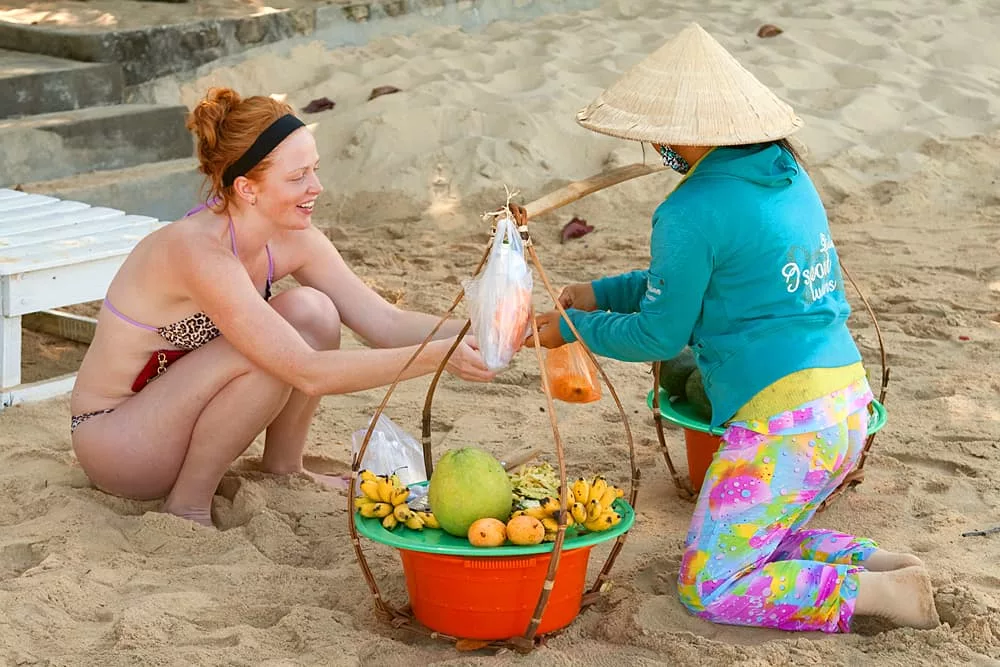




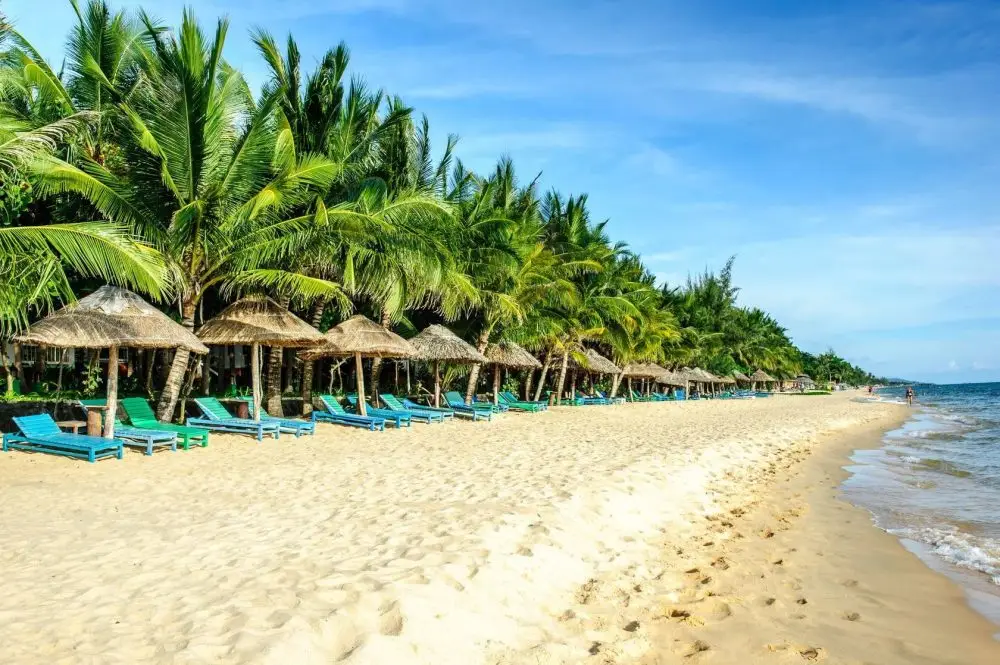
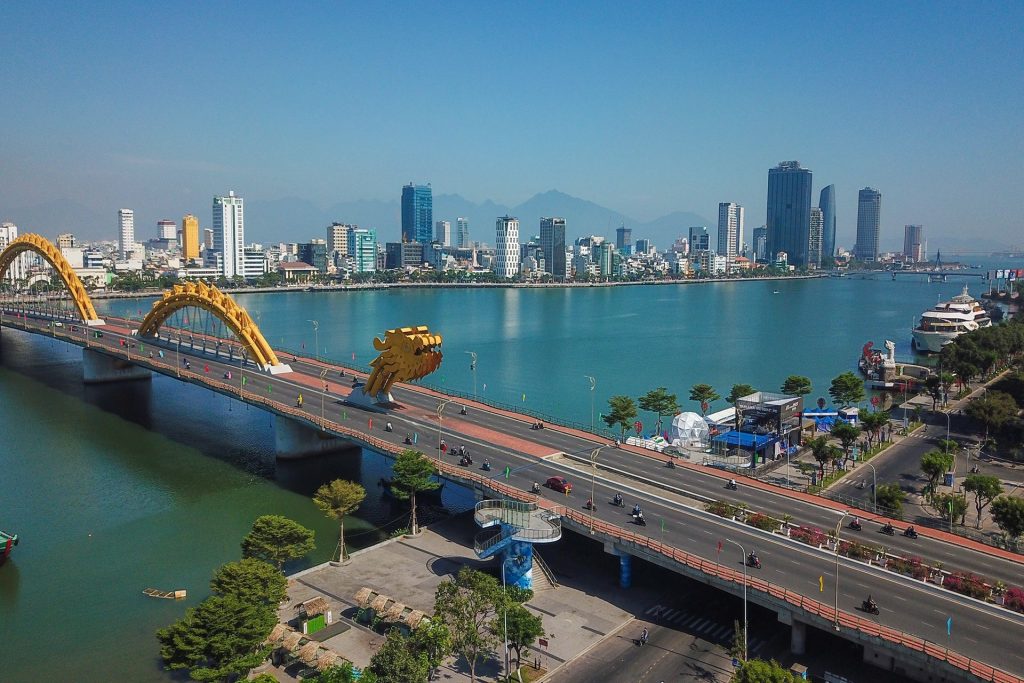 Da Nang has become one of the top ten fastest growing cities in Southeast Asia and holds the title of the business capital of coastal holidays. Da Nang’s coastline stretches for more than 30 kilometres.
Da Nang has become one of the top ten fastest growing cities in Southeast Asia and holds the title of the business capital of coastal holidays. Da Nang’s coastline stretches for more than 30 kilometres.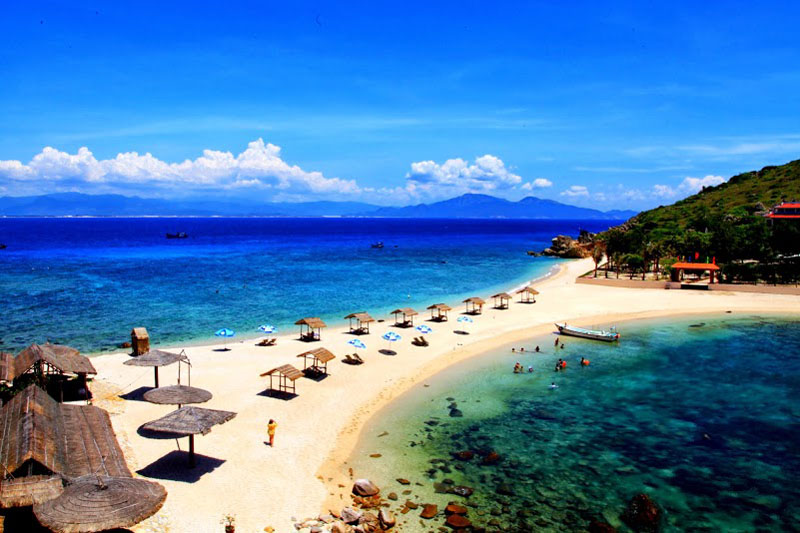 Vietnam’s beautiful beaches have long ceased to be just places to swim. They have become a full-fledged part of the tourist experience, where every morning sounds like an invitation to new discoveries. Nha Trang, Phu Quoc, Da Nang and Mui Ne are not just geographical points, but vectors of different moods, tastes and holiday formats.
Vietnam’s beautiful beaches have long ceased to be just places to swim. They have become a full-fledged part of the tourist experience, where every morning sounds like an invitation to new discoveries. Nha Trang, Phu Quoc, Da Nang and Mui Ne are not just geographical points, but vectors of different moods, tastes and holiday formats.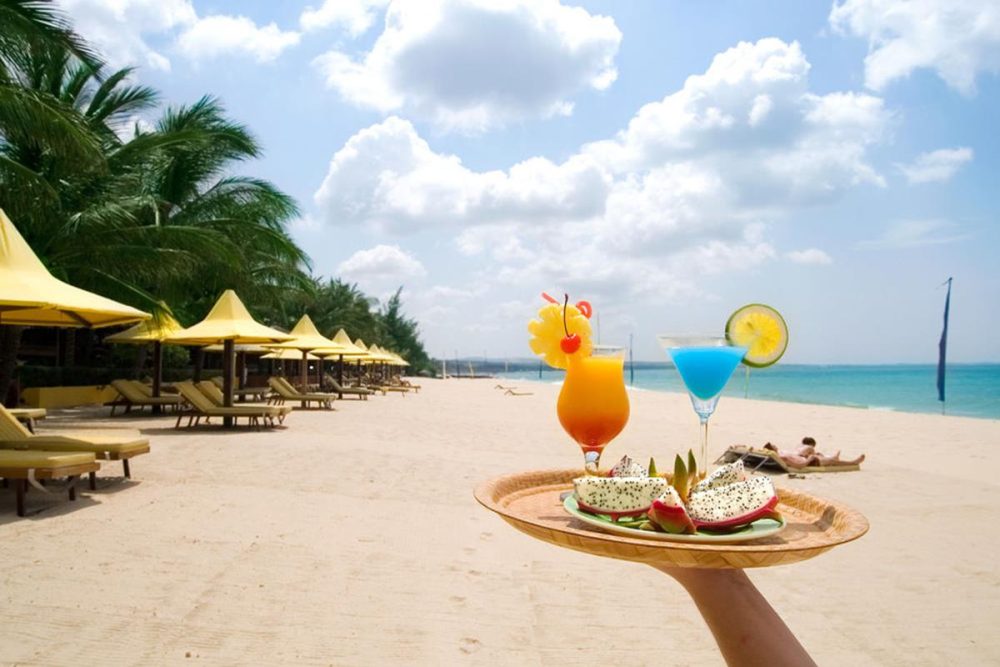
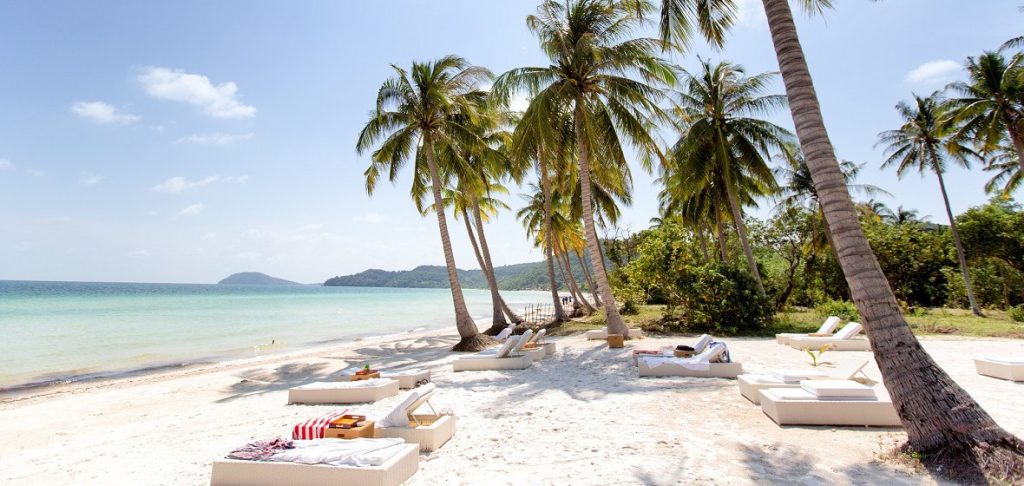 Located in the south-west of the country, Phu Quoc is often referred to as the ‘pearl island’. It is the perfect destination for those looking for a relaxing tropical-style beach holiday in Vietnam. With a coastline of about 150 km, the island offers both secluded lagoons (Bai Sao with white sand, Ganh Zau) and developed areas with hotels to suit every taste – from luxury villas to cosy bungalows in palm groves. The water here is consistently warm (+28-30°C), and the atmosphere favours complete relaxation away from the noise. In addition to relaxing on the beaches, Phu Quoc offers snorkelling and diving off the southern islands of An Toi, visits to pearl farms and black pepper plantations, and a colourful night market in Zuong Dong.
Located in the south-west of the country, Phu Quoc is often referred to as the ‘pearl island’. It is the perfect destination for those looking for a relaxing tropical-style beach holiday in Vietnam. With a coastline of about 150 km, the island offers both secluded lagoons (Bai Sao with white sand, Ganh Zau) and developed areas with hotels to suit every taste – from luxury villas to cosy bungalows in palm groves. The water here is consistently warm (+28-30°C), and the atmosphere favours complete relaxation away from the noise. In addition to relaxing on the beaches, Phu Quoc offers snorkelling and diving off the southern islands of An Toi, visits to pearl farms and black pepper plantations, and a colourful night market in Zuong Dong. A beach holiday in Vietnam is a kaleidoscope of experiences. From the white-washed bounty beaches of Fukuoka and the golden sands of Da Nang to the red dunes of Mui Ne and the bustling coastline of Nha Trang, the country offers an amazing variety of landscapes and atmospheres. Add to this warm seas, delicious food, hospitality, developing infrastructure and affordable prices, and you have the perfect holiday destination to satisfy the needs of any traveller. All that remains is to choose your perfect Vietnamese beach!
A beach holiday in Vietnam is a kaleidoscope of experiences. From the white-washed bounty beaches of Fukuoka and the golden sands of Da Nang to the red dunes of Mui Ne and the bustling coastline of Nha Trang, the country offers an amazing variety of landscapes and atmospheres. Add to this warm seas, delicious food, hospitality, developing infrastructure and affordable prices, and you have the perfect holiday destination to satisfy the needs of any traveller. All that remains is to choose your perfect Vietnamese beach!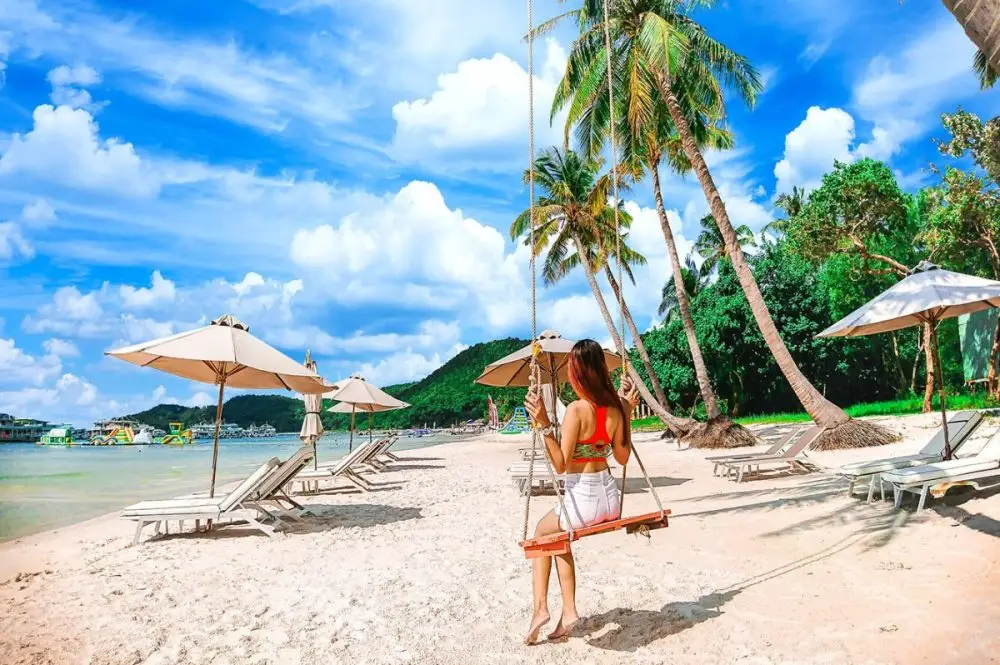
 When choosing a holiday in 2025, it’s important to consider the specialities of each region. Vietnam has resorts for everyone. Here you can relax on quiet beaches or plunge into the rhythm of bustling cities with intense nightlife.
When choosing a holiday in 2025, it’s important to consider the specialities of each region. Vietnam has resorts for everyone. Here you can relax on quiet beaches or plunge into the rhythm of bustling cities with intense nightlife. In 2025, the Asian country is still one of the most sought-after tourist destinations. The best resorts in Vietnam offer comfort, entertainment and unique natural scenery. They are perfect for any kind of holiday. Firstly, here you can relax on picturesque beaches. Secondly, you can go on an active journey full of adventure. In addition, Vietnamese resorts provide an opportunity to get acquainted with unusual sights.
In 2025, the Asian country is still one of the most sought-after tourist destinations. The best resorts in Vietnam offer comfort, entertainment and unique natural scenery. They are perfect for any kind of holiday. Firstly, here you can relax on picturesque beaches. Secondly, you can go on an active journey full of adventure. In addition, Vietnamese resorts provide an opportunity to get acquainted with unusual sights.
 Monkey Island in Nha Trang is a nature reserve that is home to hundreds of primates living in their natural environment. There are several species of monkeys, including long-tailed macaques, gibbons and even rare langurs. The animals are accustomed to tourists, so they boldly approach in search of treats.
Monkey Island in Nha Trang is a nature reserve that is home to hundreds of primates living in their natural environment. There are several species of monkeys, including long-tailed macaques, gibbons and even rare langurs. The animals are accustomed to tourists, so they boldly approach in search of treats. Nha Trang’s attractions create a unique picture of a resort that combines history, nature and modern comfort. Here everyone can choose an activity to their liking. You can stroll among ancient temples, explore the underwater world, taste local cuisine or take part in extreme entertainment.
Nha Trang’s attractions create a unique picture of a resort that combines history, nature and modern comfort. Here everyone can choose an activity to their liking. You can stroll among ancient temples, explore the underwater world, taste local cuisine or take part in extreme entertainment.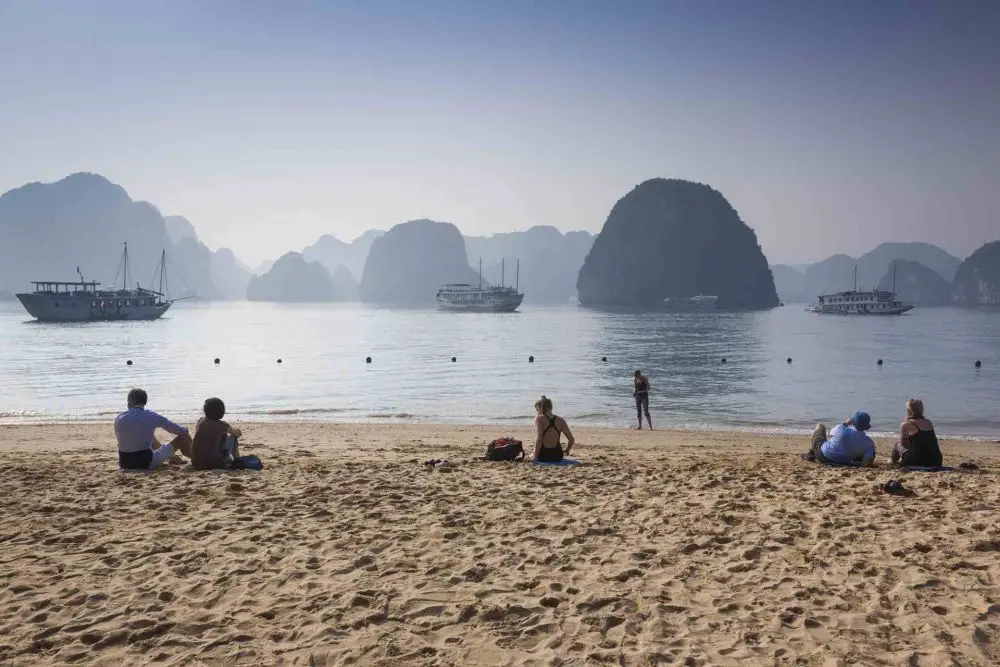
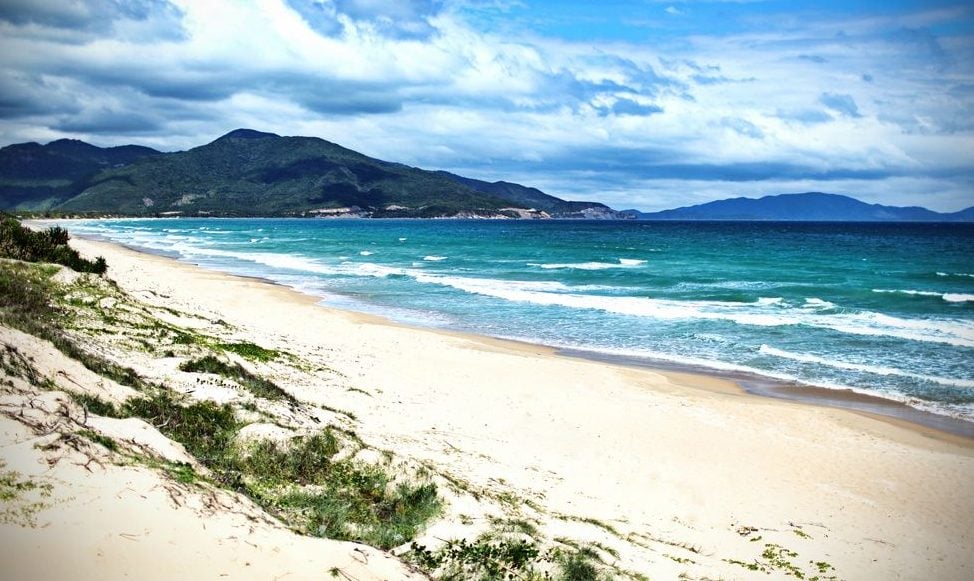 The representative of Vietnam’s top beaches is also located in the Nha Trang area, but offers a completely different holiday format. Bai Dai Beach stretches along unspoilt nature and offers the opportunity to feel completely at one with the sea. The sandy strip, up to 100 metres wide, remains uncrowded even in high season. This is the preferred holiday destination for lovers of tranquillity and surfers due to the steady waves. The water is clean and the infrastructure is characterised by small bars and shade shelters.
The representative of Vietnam’s top beaches is also located in the Nha Trang area, but offers a completely different holiday format. Bai Dai Beach stretches along unspoilt nature and offers the opportunity to feel completely at one with the sea. The sandy strip, up to 100 metres wide, remains uncrowded even in high season. This is the preferred holiday destination for lovers of tranquillity and surfers due to the steady waves. The water is clean and the infrastructure is characterised by small bars and shade shelters.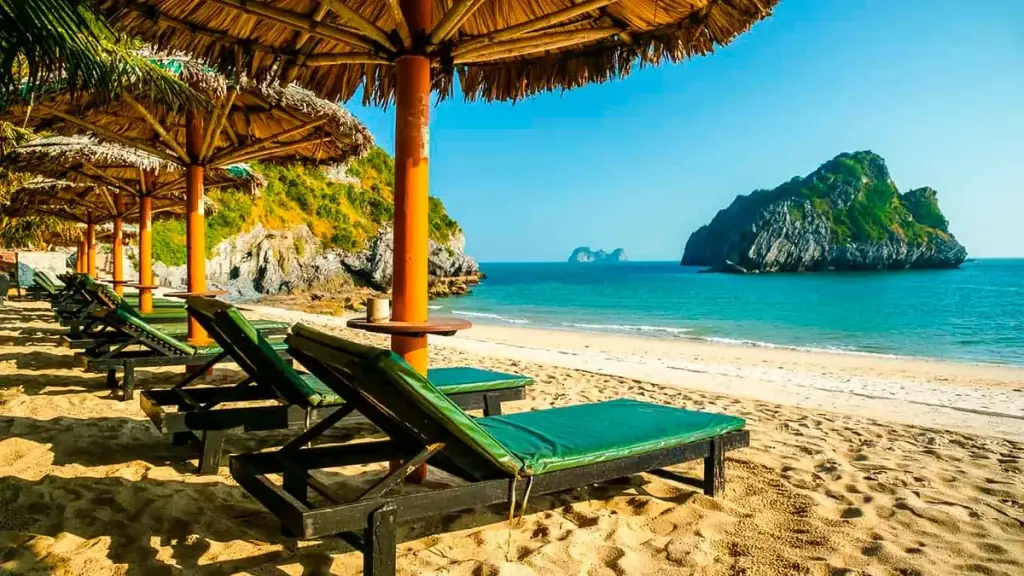 The top beaches in Vietnam cover a variety of holiday formats, from lively resort areas with developed infrastructure to secluded corners of nature. Nha Trang and Da Nang offer a high level of comfort and activities, while Phu Quoc and Con Dao are suitable for those seeking peace and harmony with nature. Each beach surprises with its own uniqueness, be it the white sand of Bai Sao or the kitesurfing waves of Mui Ne. Travellers should consider personal preferences and seasonality when choosing a holiday destination.
The top beaches in Vietnam cover a variety of holiday formats, from lively resort areas with developed infrastructure to secluded corners of nature. Nha Trang and Da Nang offer a high level of comfort and activities, while Phu Quoc and Con Dao are suitable for those seeking peace and harmony with nature. Each beach surprises with its own uniqueness, be it the white sand of Bai Sao or the kitesurfing waves of Mui Ne. Travellers should consider personal preferences and seasonality when choosing a holiday destination.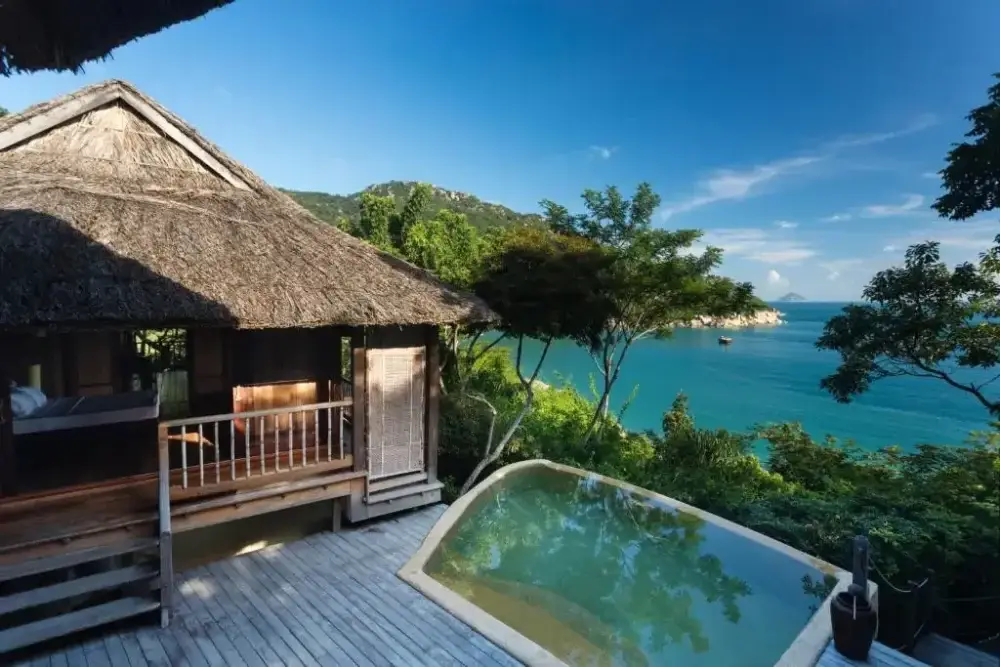
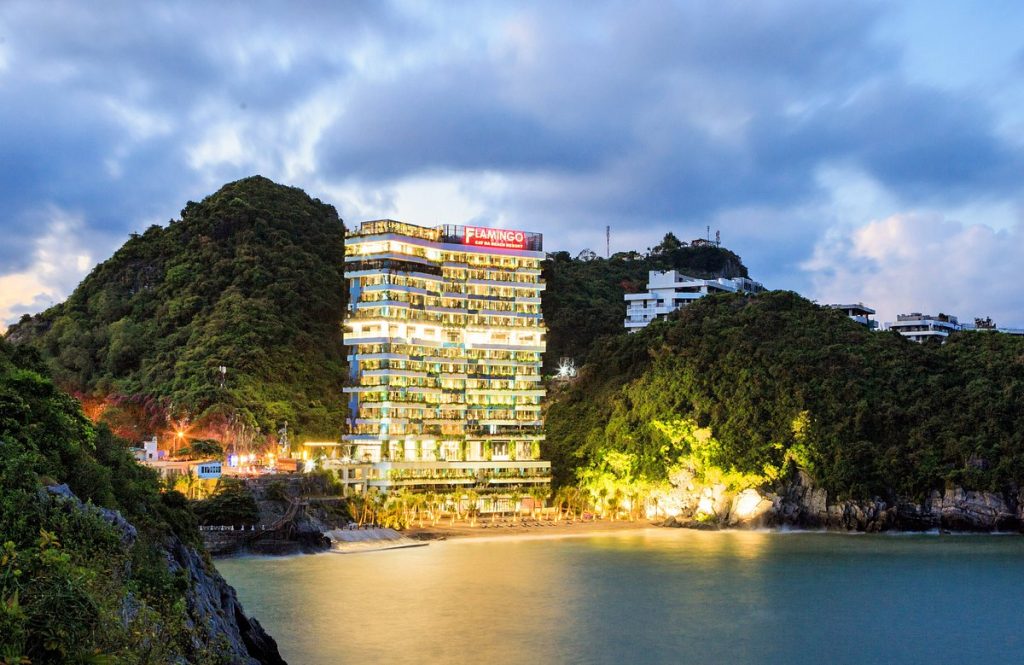 Before choosing, it is important to consider not only the price but also the quality of services, rating, reviews, transport accessibility and features of the beach or city centre. Below is a list of popular options where cheap hotels in Vietnam combine reasonable cost and good conditions:
Before choosing, it is important to consider not only the price but also the quality of services, rating, reviews, transport accessibility and features of the beach or city centre. Below is a list of popular options where cheap hotels in Vietnam combine reasonable cost and good conditions: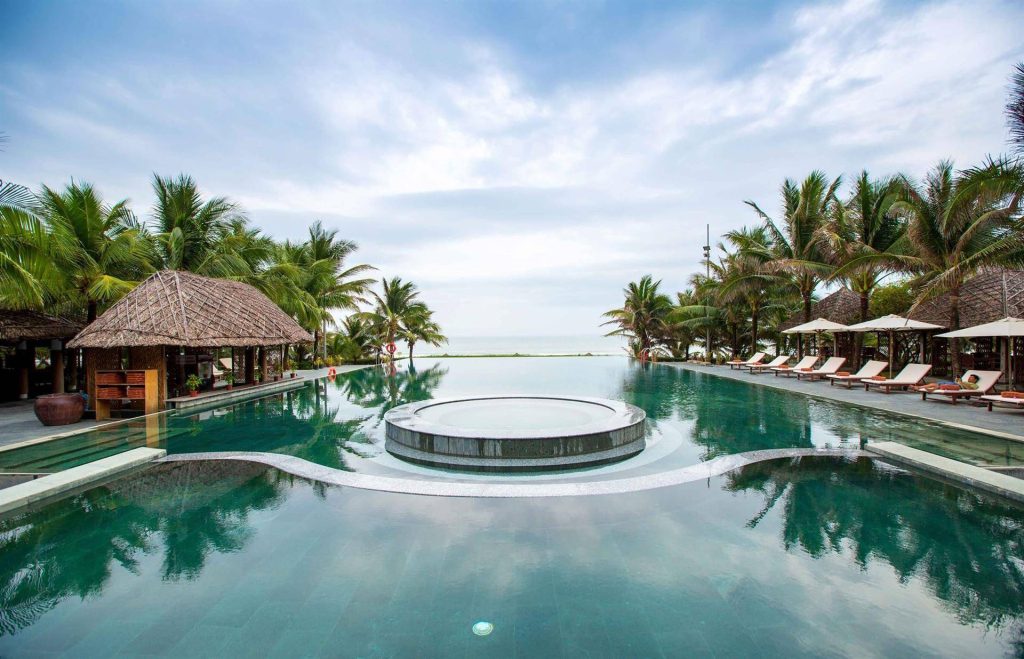 Cheap hotels in Vietnam open the way to a rich, comfortable and affordable holiday without overpaying. With the right choice, you can maximise your experience at a reasonable cost. Travellers who choose accommodation wisely not only save money, but also have an unforgettable experience in one of the most hospitable countries in Southeast Asia.
Cheap hotels in Vietnam open the way to a rich, comfortable and affordable holiday without overpaying. With the right choice, you can maximise your experience at a reasonable cost. Travellers who choose accommodation wisely not only save money, but also have an unforgettable experience in one of the most hospitable countries in Southeast Asia.
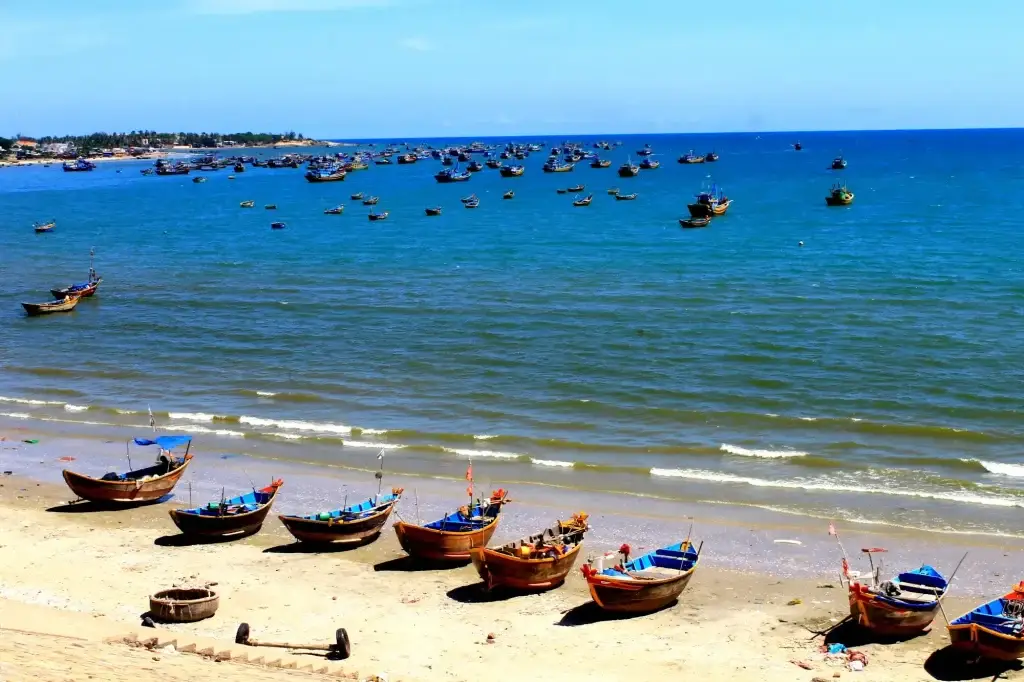 Beaches in the Mui Ne area line holidays along a strip of white sand. Vietnam resorts in this area offer the format “villa + sea”. Without crowds, without noise, with a constant sea breeze. The complex has become a point of attraction for kiters and surfers. Kite surfing schools are open from November to March. The dunes – red and white – form a landscape reminiscent of a desert rather than a beach. Restaurants along the coast operate a morning catch system: fish, crabs, mussels, squid are all caught within 1-2 kilometres of the shore. The tourist does not order a menu – he chooses an ice tray.
Beaches in the Mui Ne area line holidays along a strip of white sand. Vietnam resorts in this area offer the format “villa + sea”. Without crowds, without noise, with a constant sea breeze. The complex has become a point of attraction for kiters and surfers. Kite surfing schools are open from November to March. The dunes – red and white – form a landscape reminiscent of a desert rather than a beach. Restaurants along the coast operate a morning catch system: fish, crabs, mussels, squid are all caught within 1-2 kilometres of the shore. The tourist does not order a menu – he chooses an ice tray. Vietnam’s resorts are not about entertainment, but balance. Here they provide silence, nature, food, air, movement. The country offers holidays as a return to oneself. If the route starts in the chaos of cities, it can end on the shore, where the surf sounds instead of words.
Vietnam’s resorts are not about entertainment, but balance. Here they provide silence, nature, food, air, movement. The country offers holidays as a return to oneself. If the route starts in the chaos of cities, it can end on the shore, where the surf sounds instead of words.





